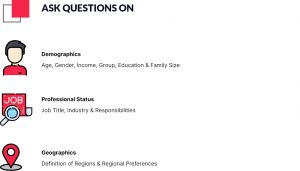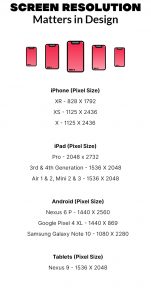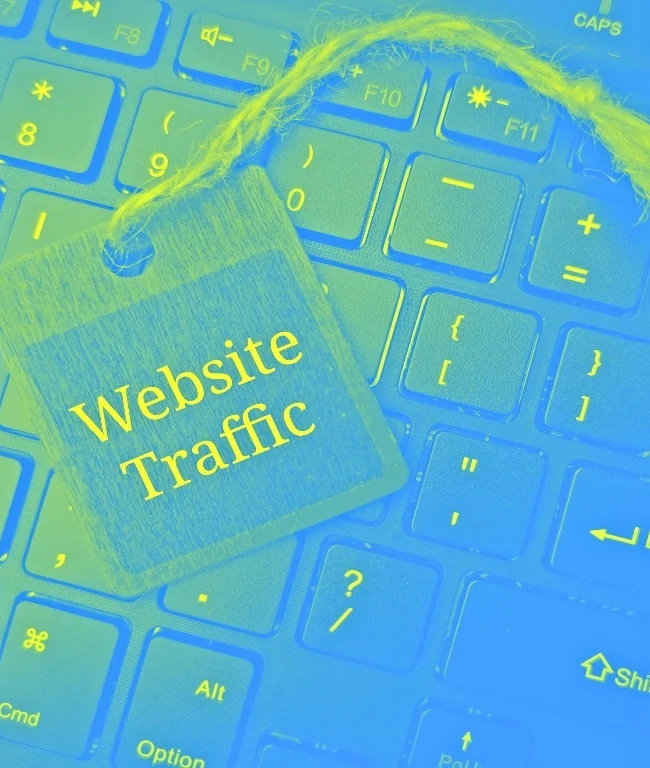
(image source: unsplash.com)
I’ve worked with many UX designers in the past decade and the smartest ones have one thing in common – they ask the right questions when they embark on a new project.
Regardless of your experience as a UX designer, you could be just starting or be an expert with a decade of experience, but the fundamentals of gathering critical information remain the same.
In this blog, I’ll highlight questions that you, as a UX designer, must ask a client; whether you’re working on a Mobile App, Website, or any device-specific App (e.g. kiosk, ATM) –
1. Why are we building this?
2. For whom are we building this?
3. What are the points of reference?
4. Where does it fit into the bigger scheme of things?
5. What are the non-negotiables?

Questions A UX Designer Must Ask, unsplash.com
UX Designer: The Brief
The Brief is probably the most important document that a UX designer must be familiar with. Once populated with relevant information, it should be able to define the purpose (as descriptive as possible) of what you’re supposed to do on the project.
I often pen down information and insights that I receive from clients in a structured manner and the Brief is as structured as it gets.
You can equip your UX toolkit with a document that I created for my use.
It’s Free!
Simply download Brief. The Brief is the prelude to the design phase and unearths the Why, Whom, What, Where, and When.
You can never go wrong with these key questions.
Why Are We Building This UX Design?
The client has real-world challenges that his/her business deals with, you have to step up and ask real-world questions about the client’s business. While you’ve heard this before – Understand your client’s business, it can be difficult for a UX designer to ascertain the intelligence that has to be rooted out.
Let’s say your client is a fashion brand that operates retail stores in a particular geography and desires to introduce fashionwear through a Mobile App, here’s what you need to know –
- What categories (in fashionwear) does the brand sell? If there are multiple categories, what are the top-selling ones?
- Who is competition and How does the brand differentiate itself from it?
- What is the profile of customers, how many are there, and what % are frequent buyers – those who have bought more than once over the past year?
- Where does the brand see itself in the next 5 years; what are the expansion plans – stores, categories, customers?
- What does the brand do to acquire new customers, and what kind of promotions does it offer?
Most importantly – why does the brand want to launch its Mobile App?
What problem/s will it solve?
How does the App meet the brand’s business objectives?

UX Designer: Why Are We Building This?, pexels.com
For Whom Are We Building This?
This is the best part of the job – understanding your client’s customers and in this case the users of the Mobile App.
Capture as much User information as you can in the discovery phase of the process.
Ask questions on –
- Demographics – Age, Gender, Income group, Education, and Family size
- Professional status – Job Title, Industry, and responsibilities.
- Geographics – Definition of Regions and Regional preferences (determine what sells where and why).
- Buying behavior – What role does the User have in the buying process? What is the journey that a customer (User) undergoes to buy a pair of sports shoes at the store and how can you create an amazing one through the App? What is the frequency of the purchase?
- Influences & Social engagement – How does the User get information on a product? What are the sources of information – peers, friends, social media, websites, and others?
- Psychographics – Beliefs, Goals, and Values. These could be personal and professional.

Questions For A UX Designer To Ask
As human beings, we’re a bundle of emotions, and these emotions result in a certain behavior towards a person, product, service, or object.
You have to think like your User and embody his/ her experience – which is the reason why plotting insights and intentions into an Empathy Map is useful.

(www.nngroup.com)

For those who want to know what empathy has to do with this exercise.
Well! empathy is about equipping yourself to experience what your Users feel so that you can make a User’s life easier when interacting with a product, service, or device.
Your job is to create Personas that represent the users’ needs, behaviors, and experiences and an Empathy Map is a tool that acts as a guidepost.
I usually like to conduct small research where I take a sample size of 20-30 existing customers or potential Users and ask them a few qualitative questions such as –
- What did they feel while making a purchase at the store and how would they feel if a similar experience is provided through an App?
- What are their expectations?
- What problems do they face?
Here is an example of Persona of a fashion aficionado. The format is something you can follow –

An example of a UX Designer Persona
You don’t have to invest in ‘man days’ (prefer the word person-days) of empirical research to create one. A lean Persona that covers Demographics, Needs, Behaviors, and Goals can also solve your purpose.
If you’re new to the concept there are some really good tools out there, such as – HubSpot’s tool that’ll help you with the basics of crafting a Persona.
What Are The Points Of Reference?
All clients have high expectations of what they’re trying to build. It becomes difficult for a UX designer to canvas these expectations from a visual perspective.
I’ve learned that by asking basic questions to clients such as – What inspires you? What Apps have you experienced that have wowed you? What do you like about these Apps?
Clients can provide points of reference that are close to the vision for their product, service, or in this case the App.
The inspirations may not be from the same business or category. A client in the travel business might find a Bank’s App aspiring.
This will give you the necessary sensory cues. For example; the color palette, various visual elements, and the overall look and feel that’s close to the client’s expectations.
What’s The Big Picture For A UX Designer?
Digital products don’t work in isolation anymore. There are various moving parts to a mobile or web application. A UX designer must understand, at a broad level, the dependencies of these moving parts on the product that has to be built.
I’ve tried to put some context to this –
Circling back to our example on the Mobile App for the fashionwear brand. Having an omnichannel experience could be a priority for this client, where a User can buy a pair of shoes on the Mobile App but pick them up from the nearest store. If that is the case, then there has to be a feature on the App to facilitate so; the user flow has to be defined likewise.
Other dependencies are in the form of third-party integrations –
Payment Gateway, Last-mile delivery, and Universal loyalty programs. A quick study of third-party integrations always helps. You may also be required to recommend some of them.
Most projects are executed in a phased manner – the now and the near future. Design and Development teams have to be aligned together to deliver tasks in these phases.
The features that are a ‘must have’ should be a part of the initial phase of the project. Your role is to clearly define the User Journeys for all phases.

The Big Picture For A UX Designer, pexels.com
What Are The Non-Negotiables For A UX Designer?
Every client will have a list of items that must be a part of the project. These items are called the ‘non-negotiables’. Here is a list of considerations that you’ll need to take stock of –
Brand considerations
- Sanctity of the Logo and Brand colors. The Do’s & Don’ts of using a client’s logo. Not all clients will have clear guidelines on this. You may have to define the UI guidelines as a part of the assignment.
- The Design language for a connected UX. If you’re working on multiple digital channels for a brand (such as a Website and a Mobile App), you should be able to propose a connected UX Design so that the digital channels appear visually aligned and are part of a single family.
Technology considerations
- Operating Systems – iOS, Android, or others. Clients may have a preference. But the popularity and usage of a particular OS in a region dictate the choice of an Operating System.
- Screen resolutions – Some resolutions are best suited for a device. I’ve listed popular screen resolutions. I may have missed some, but these are the most common ones out there.
iPhone (Pixel Size)
XR – 828 X 1792
XS – 1125 X 2436
X – 1125 X 2436
iPad (Pixel Size)
Pro – 2048 X 2732
3rd & 4th generation – 1536 X 2048
Air 1 & 2, Mini 2 & 3 – 1536 X 2048
Android (Pixel Size)
Nexus 6 P – 1440 X 2560
Google Pixel 4 XL – 1440 X 869
Samsung Galaxy Note 10 – 1080 X 2280
Tablets (Pixel Size)
Nexus 9 – 1536 X 2048
Build of the App
While emerging technologies such as Voice, Virtual Reality, Chatbots, and AI bring a certain awesomeness to an App, there are various standards that a UX designer has to follow to work with these technologies.
Security considerations
Understand the security features that impact the User flow. This is specifically applicable to eCommerce and Fintech Apps. Not to mention that many a phone these days have a Face ID feature to access the phone. You may have to provision for it in the design.
Legal considerations
Privacy Policy & Terms of Use. You may not have to dive into the content of these documents, the fact that they have to be there in the scheme of things.
Call to Action (CTA)
Make a note of the Lead generation, inquiries, and Social sharing CTAs that a client expects to be featured in the UX design of the App.

CTA For A UX Designer
Conclusion
These questions may seem a lot to handle in the beginning. Once you’ve practiced the method with a few attempts, you’ll realize that you’ll be spending less time following the structure of questioning and more time capturing relevant information in a (UX) Jedi-like manner.
Without answers to some of these questions, it is also difficult to scope the work forget alone commence the project post a sign-off from the client on the commercial proposal. Take a reasonable amount of time to gather critical information. Dig Deep!
People Also Read:
How To Build A Career In UX Design?
How UX Designers Can Improve Designs With Google Analytics 4
LinkedIn Groups For UX Designers




